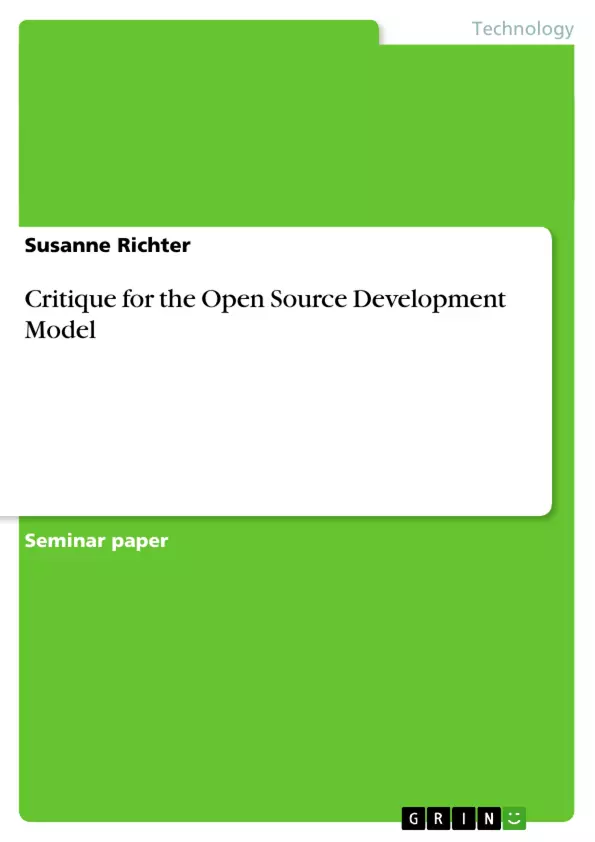This paper will show the problematic aspects of Open Source Software by looking behind the scenes and unveiling its mask of a happy and satisfied world of cooperating hobby-programmers with an enormous creative potential.
Inhaltsverzeichnis (Table of Contents)
- Introduction
- Disambiguation
- History of Open Source Software
- Strengths of OS
- Open Source Definition OSD
- Weaknesses of OS
- Problems and Limitations
- Conflicts Among Developers
- Pseudoproblems
- Death of an OS Project
- Legal Questions
- Warranty
- Announcement of Source Code
- Development and Payment
- Leasing
- Allocation for Download
- Patent Right
- Licenses
- Examples
- Unix
- GNU
- Linux
- Costs Example
Zielsetzung und Themenschwerpunkte (Objectives and Key Themes)
This paper examines the Open Source Software (OSS) development model, moving beyond its idealized portrayal as a harmonious collaboration of hobbyist programmers. It aims to unveil the inherent complexities and challenges faced by OSS projects, particularly concerning legal questions, potential pitfalls, and the limitations of its idealistic image.- The paper explores the strengths and weaknesses of the OSS model.
- It delves into the challenges of managing large-scale OSS projects, including communication, conflict resolution, and the “town council effect.”
- The paper analyzes the legal complexities surrounding OSS distribution, copyright, and patent rights.
- It examines the historical development of prominent OSS projects like Unix, GNU, and Linux.
- It emphasizes the need for critical evaluation and realistic expectations when considering the use of OSS.
Zusammenfassung der Kapitel (Chapter Summaries)
The introduction discusses the historical context of OSS, contrasting it with traditional commercial software development. It then introduces the concept of the "bazaar model," highlighting the strengths and criticisms associated with this approach. Chapter 2 focuses on the strengths of OSS, emphasizing its flexibility, adaptability, and potential for cost savings. It outlines the core principles of the Open Source Definition (OSD) and explains its significance for ensuring the integrity and freedom of OSS projects. Chapter 3 delves into the weaknesses and limitations of the OSS model. It discusses the challenges of rapid development, communication difficulties within dispersed development teams, and the potential for fragmentation within OSS communities. The chapter also examines the “town council effect” and the “NIH syndrome” which can hinder progress. Chapter 4 analyzes the legal complexities surrounding OSS, focusing on issues like warranty, copyright, patent rights, and licensing. It explores the difficulties of applying traditional legal frameworks to the unique context of OSS. Chapter 5 provides examples of successful OSS projects, including Unix, GNU, and Linux. It explores the historical development of these projects and highlights their strengths and weaknesses. It also provides a cost comparison between OSS and commercial software, emphasizing that OSS isn't always the most cost-effective solution.Schlüsselwörter (Keywords)
This paper examines the Open Source Software development model, covering key concepts like the “bazaar model,” the Open Source Definition, legal issues, copyright, patent rights, and the inherent complexities of large-scale OSS projects.
Excerpt out of 22 pages
- scroll top
- Quote paper
- Susanne Richter (Author), 2005, Critique for the Open Source Development Model, Munich, GRIN Verlag, https://www.grin.com/document/75567
Look inside the ebook



